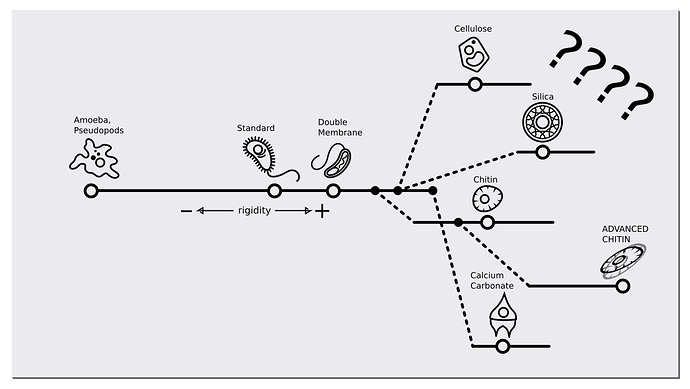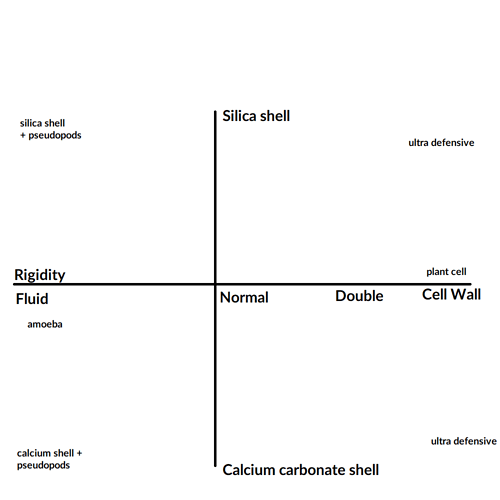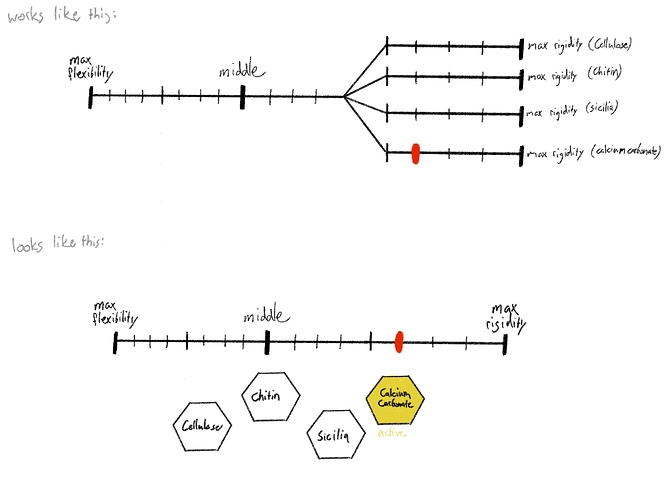Thanks for the feedback,
Regarding the questions:
@Narotiza, In the real world most organisms can survive in a relatively wide range of temperature. The more adapted to extremes however, the narrower the range your membrane will be effective. A middle-range membrane would be you jack-of-all-trades, not better than a specialized membrane in a specific environment and nowhere near able to survive extremes but able to exist in a wider range of temperatures and sharper variations like in tidepools.
Regarding the slider, i agree that this is a very good system and could definitely be used to change the membrane fluidity. Keeping it in the middle would make you great at resisting temperature variations and live in a normal range of temperature but anything a bit more extreme requires you to adapt by changing fluidity.
About the mix and match of membranes and walls, in real life you cannot mix and match any and all and there are metabolic/didn’t-stick-in-evolution reasons, but from a game stand point why the hell not? After all if the player is willing to deal with the consequences of having both a specialty membrane and a wall, this can make for some interesting options. The only limit I see, and that is from a balance/simplicity standpoint, would be to allow only one wall type at a time while any membrane could be combined with it. But again, that is only my way of seeing it and i do not know how hard or easy it is to put in game.
Finally for the Silica shell, I did say it does not block light and I understand that it can be a little misleading. Actually any wall or thicker membrane would block some amount of light. This is not much however, plants do most of the photosynthesis and have cellulose walls. At this scale I am not sure if this actually matters all that much but from a gameplay standpoint it could indeed be a good factor to have walls block some amount of light for photosynthesizing organisms. This amount should be small however as most of the photosynthesizing organisms in real life actually have a cellulose wall or silica/calcium carbonate shell.
@tjwhale, For the rate of sinking, i like the way you brought it up and can tell you some organisms do have vacuoles to increase their buoyancy. Most of the organisms living in the middle or higher part of the ocean rely on currents to keep them in suspension since things do not behave all the same at this scale. Indeed many diatoms, pretty much all those you can see that are oblong oval-shaped or banana-shaped are actually bottom dwellers in shallower waters where they photosynthesize and glue themselves to sand. This glue also holds sand particles together and diatoms are good at control erosion at a micro-scale.
About rigidity, it does not control temperature per say, but rather allows a cell to continue it’s normal life in different temperatures. Like i said earlier to Narotiza, average membranes are the jack-of-all-trade of ambient temperature while more rigid will allow to keep a normal fluidity in hotter environment instead of bursting. Fluidity increases with temperature and resistance is affected by membrane composition. A very rigid membrane will be as fluid in near a black smoker as a very fluid membrane will be in arctic conditions, each being adapted to match its living conditions. However the more specialized you are the least adaptable to change you become.
I must admit that as of right now I am a bit puzzled as to how to differentiate chitin from cellulose. At this scale pretty much everything is transparent to a certain degree but, yes, chitin more-so than cellulose. There are three main differences i can think of from the top of my head but i will look into it today: Chitin is a nitrogen rich-er material than cellulose. Cellulose walled cells tend to be more organised and geometric than chitin-walled cells, plant vs fungi. And last but not least in later stages on the game, cellulose could be reinforced with lignin to allow for woody plants instead of small herbs and ferns.
Hope that helps, do not hesitate to ask further questions!
In the meantime i have an appointment with some reference books to find more information.


